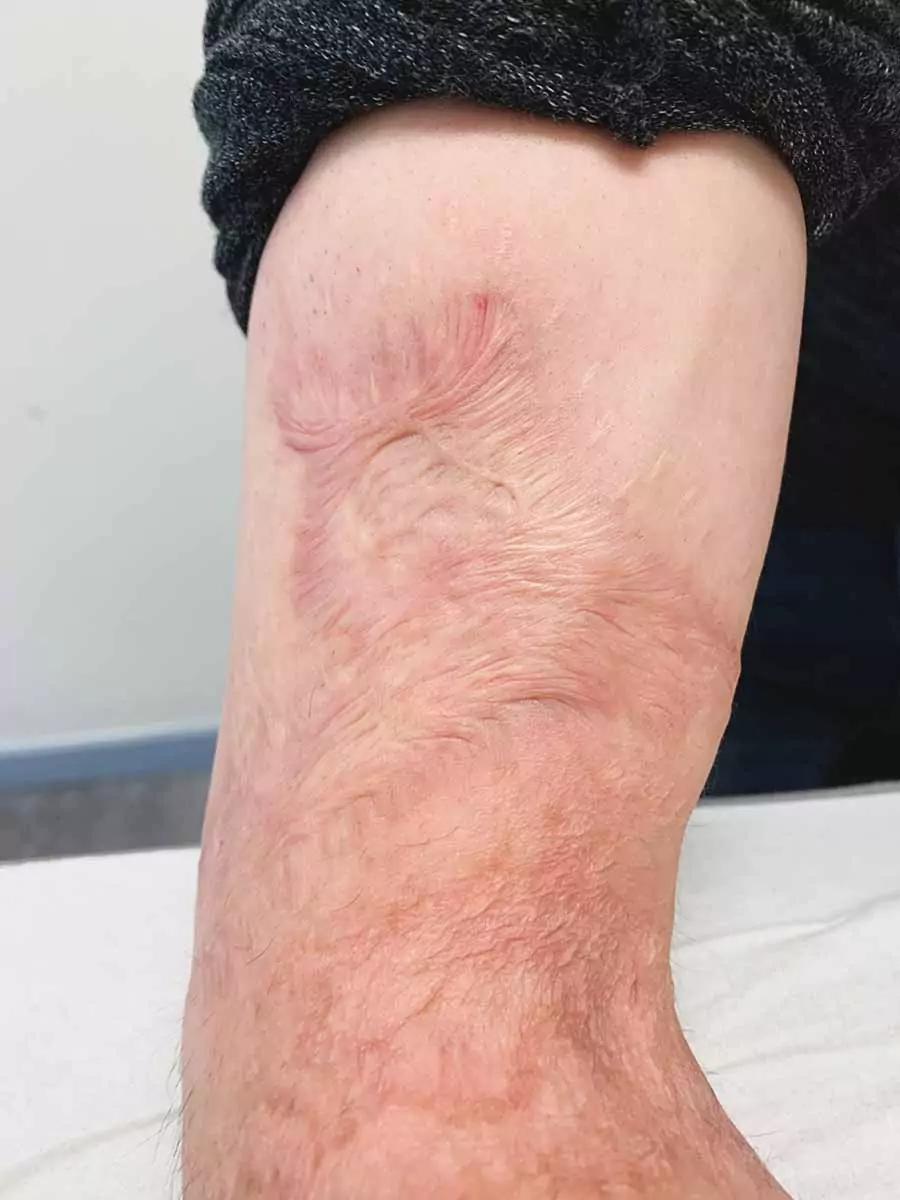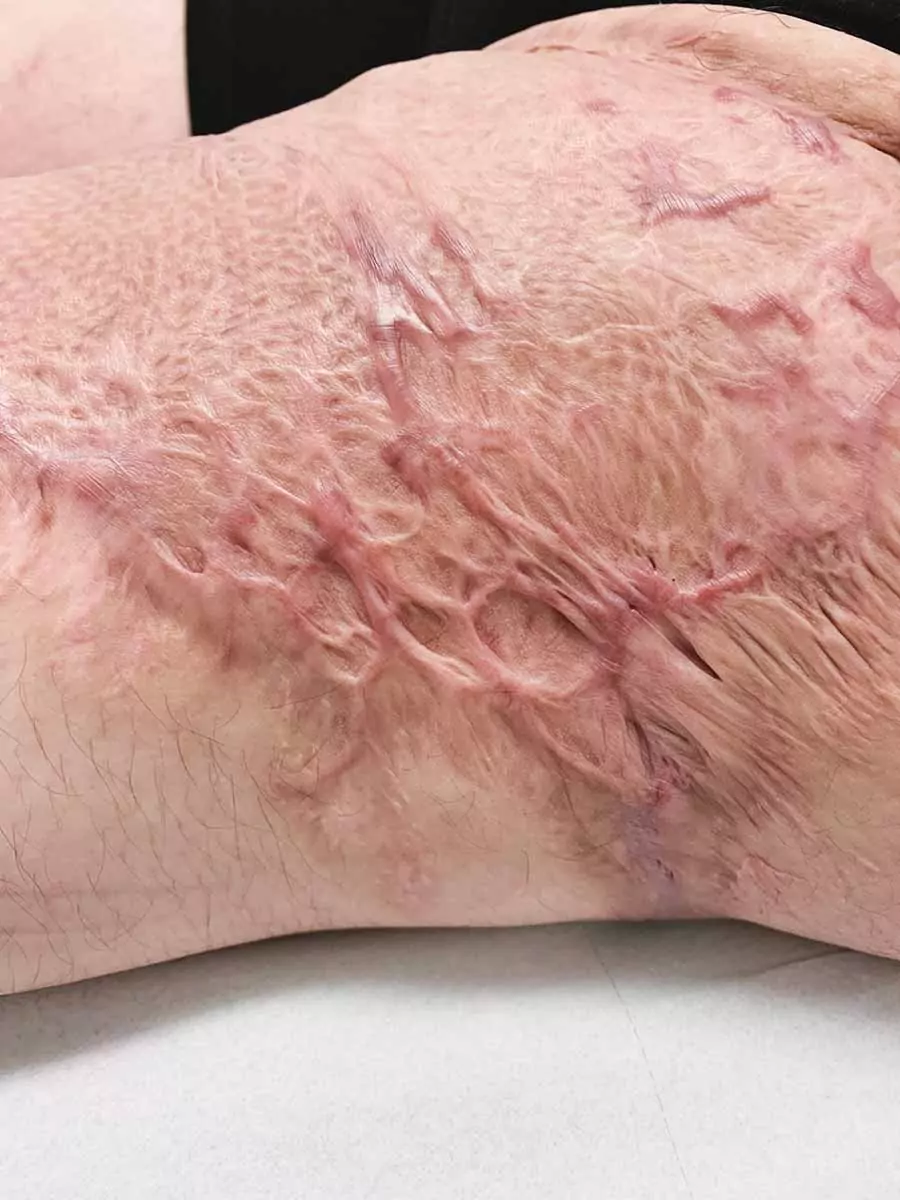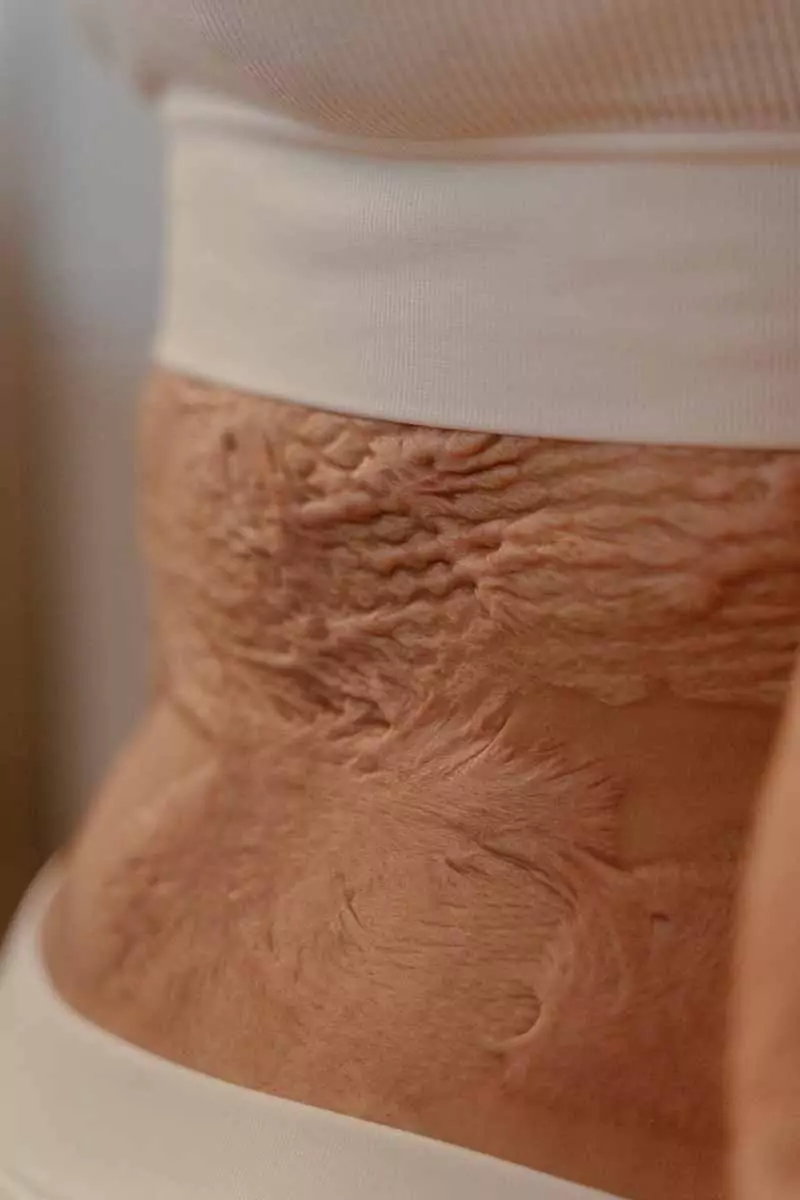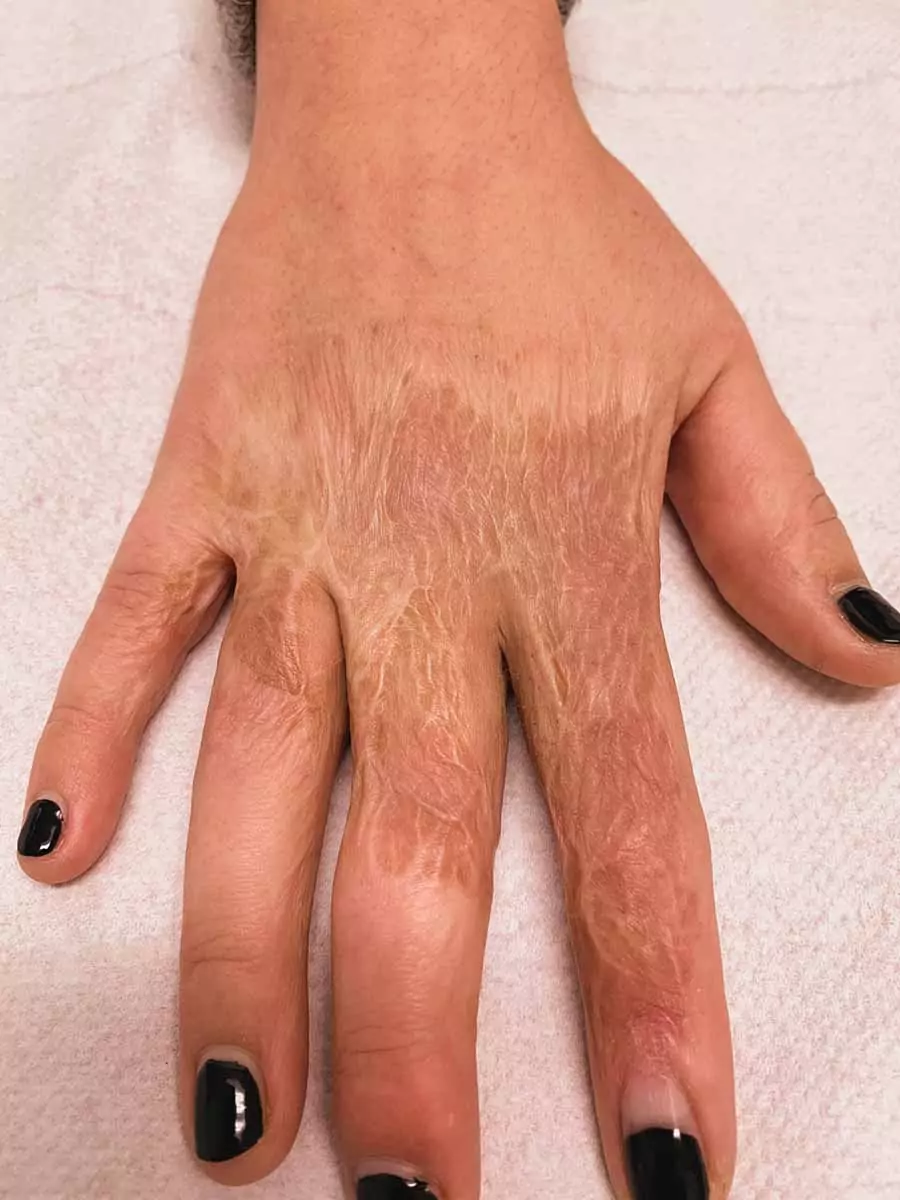About Texture
When the deeper layer of your skin gets damaged — for example, by a cut or a burn — a scar can form.
Your body tries to repair the damage by creating new skin fibers (collagen). But sometimes this process isn't perfect, causing the skin in that area to feel or look different from the surrounding skin.
Large wounds that heal slowly, especially burns, often result in scars that don’t look smooth.
Sometimes a scar becomes rough or uneven because of a treatment like a skin graft.
When thin pieces of skin are used, they can have small holes (called a "mesh graft"). These holes heal slowly, which can leave the scar looking uneven.











